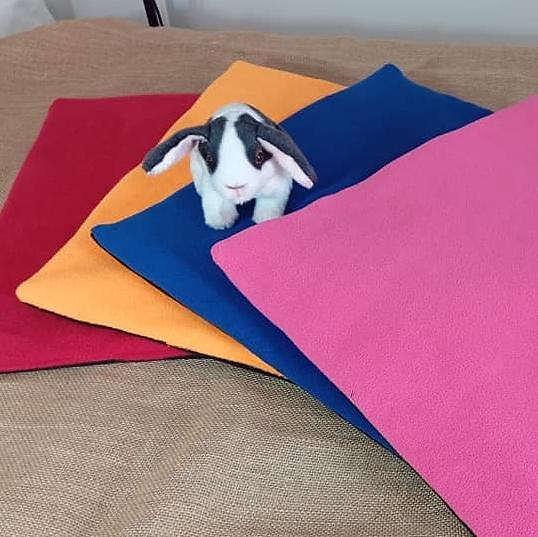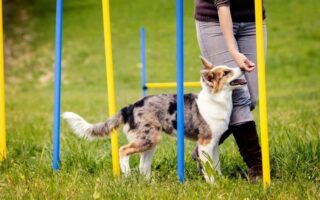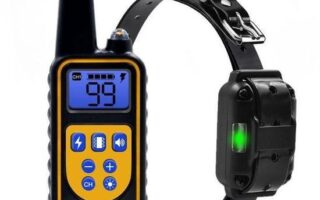Introduction: The Art of Pee Pad Training Your Furry Friend
In the bustling world of pet ownership, few challenges evoke as much curiosity and creativity as house training a new pup. As every seasoned dog trainer knows, the journey to a well-mannered companion is paved with patience, consistency, and a sprinkle of ingenuity. Enter pee pad training — an innovative solution that pairs practicality with care, offering an ideal starting point for urban dwellers and busy families alike. Whether you are welcoming a tiny teacup breed into your home or guiding a larger rescue on the path to comfort, pee pads provide a safety net in situations where outdoor access may be limited or inconvenient. In this article, we’ll explore the intricacies of pee pad training, delving into effective strategies, common pitfalls, and the benefits that can make this method a valuable tool in your dog training repertoire. Join us as we unravel the secrets to transforming your pup’s restroom routine into a seamless, stress-free experience.
Table of Contents
- Understanding the Basics of Pee Pad Training for Your Pet
- Creating a Positive Environment for Successful Pee Pad Habits
- Troubleshooting Common Challenges in Pee Pad Training
- Transitioning from Pee Pads to Outdoor Potty Training
- Q&A
- To Conclude
Understanding the Basics of Pee Pad Training for Your Pet
Pee pad training is an effective method for teaching your pet where to relieve themselves, especially for those who may not have easy access to outdoor spaces. This training technique can be particularly useful for puppies, older dogs, or pets recovering from surgery. To get started, consider the following essential steps:
- Select the right location: Place the pee pad in a quiet, easily accessible spot that your pet frequents.
- Introduce the pad: Allow your pet to sniff and explore the pad to familiarize them with it.
- Create a routine: Take your pet to the pad at regular intervals, such as after meals, playtime, or naps.
- Use positive reinforcement: Praise or reward your pet each time they successfully use the pad.
Consistency is crucial in the training process. To effectively monitor your pet’s progress, keep a record of their successes and any accidents. You might consider creating a simple table to track their usage:
| Date | Successes | Accidents |
|---|---|---|
| 01/01/2023 | 3 | 0 |
| 01/02/2023 | 4 | 1 |
| 01/03/2023 | 5 | 0 |
By monitoring your pet’s performance, you can adjust your training strategy as needed. With time, patience, and consistent effort, your pet will learn to use the pee pad confidently and effectively.
Creating a Positive Environment for Successful Pee Pad Habits
Establishing a nurturing atmosphere is essential for effective pee pad training. Dogs thrive in environments where they feel secure and supported. Begin by selecting a quiet, dedicated space for the pee pad, away from their resting or eating area, to minimize distractions. Make this space inviting by:
- Using familiar scents: Place a piece of their used pad or a blanket to create a sense of ownership.
- Maintaining cleanliness: Ensure the area is free from mess or any strong odors that might be off-putting.
- Positive reinforcement: Reward your pet immediately after they successfully use the pad to encourage repetition.
Consistency is key when forming new habits. Regularly schedule bathroom breaks to help your dog understand when and where they should go. Observe your pet’s cues; they will often show signs when they need to relieve themselves. Create a simple chart to track their progress, noting successful attempts and any accidents. An example of a tracking table could look like this:
| Date | Time | Success (Yes/No) | Notes |
|---|---|---|---|
| 10/01/2023 | 9:00 AM | Yes | First successful use! |
| 10/01/2023 | 12:00 PM | No | Accident on the floor. |
| 10/02/2023 | 10:30 AM | Yes | Good job using the pad! |
Troubleshooting Common Challenges in Pee Pad Training
Pee pad training can sometimes feel like a daunting task, and you may encounter a few bumps along the way. One common challenge is pet reluctance to use the pads consistently. This may occur due to distractions in the environment or a lack of understanding of where to go. To combat this, consider the following tips:
- Positive Reinforcement: Praise your pet immediately after they use the pad, creating a positive association.
- Consistent Placement: Ensure the pads are always in the same spot, creating a familiar location for your pet.
- Limit Distractions: During training sessions, minimize noise and activity around your pet to help them focus.
Another frequent issue is accidents outside the designated area, which can be frustrating but is part of the learning process. To address this, establishing a routine can be immensely beneficial. Keep the following strategies in mind:
- Frequent Bathroom Breaks: Take your pet to the pad often, especially after meals and naps.
- Monitor Behavior: Watch for signs that your pet needs to go, such as sniffing around or circling.
- Gradual Freedom: Allow more freedom in the house only after consistent successes on the pad.
Transitioning from Pee Pads to Outdoor Potty Training
Moving from pee pads to outdoor potty training can be an exciting yet challenging experience for both you and your furry friend. It is crucial to understand that this transition requires patience, consistency, and positive reinforcement. Start by gradually introducing your pet to the outdoors, ideally during times they would normally relieve themselves. Here are some helpful tips to make the process smoother:
- Set a Schedule: Create a regular potty routine by taking your dog out first thing in the morning, after meals, and before bedtime.
- Positive Reinforcement: Praise and reward your pet each time they go outside successfully, solidifying the connection between outdoor time and potty breaks.
- Limit Indoor Options: Subtly reduce the accessibility of pee pads, encouraging your pet to rely on outdoor surroundings.
In addition to these tips, consider their comfort level and anxiety. Some pets may feel overwhelmed by being outdoors due to new sights and sounds. A gradual introduction can ease these concerns. You might even use a transitional area outside—such as a leash-restricted section of your yard—where they can get accustomed to the idea of going outside. Here’s a simple table summarizing key steps in the transition:
| Step | Description |
|---|---|
| Limit Use of Pee Pads | Gradually phase them out to encourage outdoor habits. |
| Consistent Schedule | Establish a routine for outdoor potty breaks. |
| Positive Association | Reward outdoor potty success to build positive reinforcement. |
Q&A
Pee Pad Training Q&A
Q1: What is pee pad training?
A1: Pee pad training is a method used to teach pets, primarily dogs, where to relieve themselves indoors using specially designed absorbent pads. This technique is especially useful for puppies, older dogs, or dogs that may not have immediate access to outdoor spaces.
Q2: Why should I consider pee pad training my pet?
A2: Pee pad training can be a practical solution for various situations, including harsh weather conditions, apartment living, or for dogs with medical issues that make frequent outdoor bathroom trips challenging. It also provides a designated space for your pet to eliminate, making cleanup much simpler.
Q3: How do I start pee pad training my dog?
A3: Start by placing the pee pad in a consistent, easily accessible location. Use positive reinforcement—like treats or praise—when your dog uses the pad. You may want to keep a close eye on your pet initially, taking them to the pad frequently, especially after eating, drinking, or waking up.
Q4: What are some tips for successful pee pad training?
A4: Consistency is key. Use the same phrase each time you want your dog to use the pad, and reward them as soon as they do. Keep the training environment positive and avoid scolding if accidents happen. It’s also a good idea to gradually reduce the size of the pads until you’re ready to transition to outdoor potty habits, if desired.
Q5: How long does it typically take to train a dog using pee pads?
A5: Training times can vary significantly depending on the dog’s age, breed, and prior experiences. Puppies may take a few weeks to fully grasp the concept, while older dogs might learn faster. Patience and consistency are essential, so don’t rush the process!
Q6: Are there specific pads I should use for training?
A6: There are various types of pee pads available on the market, including disposable, washable, and even those with attractant scents to encourage usage. Choose one that fits your lifestyle and your pet’s preferences. Ensure pads are absorbent and have leak-proof backing to prevent messes.
Q7: What do I do if my dog refuses to use the pee pad?
A7: If your dog is hesitant to use the pad, ensure it’s in a quiet spot away from distractions. You can try enticing them with treats or using a pet-safe attractant spray. If they still resist, consider revisiting basic potty training techniques and gradually reintroducing the pad.
Q8: Can pee pad training lead to problems with outdoor potty training later?
A8: With proper transition techniques, pee pad training does not have to interfere with outdoor potty training. Gradually introduce outdoor potty breaks while maintaining the pee pad as a backup. This helps reinforce the idea that it’s acceptable to relieve themselves both inside and outside.
Q9: How do I clean and maintain pee pads?
A9: Disposable pads should be replaced regularly, typically once they are soiled. If you’re using washable pads, follow the manufacturer’s instructions for cleaning. Regular washing helps maintain hygiene and has the added benefit of keeping odors at bay.
Q10: Are there any long-term effects of pee pad training on my dog’s behavior?
A10: If done properly, pee pad training should not have negative long-term effects on your dog’s behavior. Many pets adapt comfortably to indoor elimination. However, it’s essential to reinforce outdoor potty habits as your dog matures to ensure they can do both seamlessly.
With the right approach and consistent effort, pee pad training can offer a convenient solution for both you and your furry companion. Happy training!
To Conclude
As we draw the curtain on our exploration of pee pad training, it’s clear that this technique offers a unique solution for pet owners navigating the often challenging journey of house training. With a little patience, commitment, and understanding, you can create a harmonious environment for both you and your furry friend. Pee pad training isn’t just about managing bathroom habits; it’s an opportunity to build trust and strengthen the bond you share. As you embark on this path, remember that every pet is different, and what works for one may not suit another. Keep experimenting, stay positive, and celebrate the small victories along the way. After all, a well-trained pet is not just a joy for its owner but a happier, more comfortable companion in every aspect of life.



